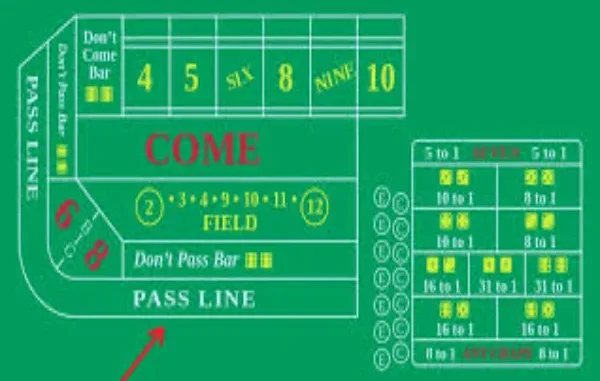
A low house edge or a large house edge is the norm for most casino games. Craps is unique among gambling games since it provides both. Among other things, this one-of-a-kind game offers some of the most optimal wagers one might make in a casino. Also, the house has an enormous advantage over players that almost exceeds 17% on some of the more complex proposition bets in craps!
The Odds and Probabilities of Craps Bets
For the most part, gamblers have trouble with this phase. In craps, as in all games of chance, each roll of the dice has an equal chance of winning or losing, regardless of what has happened before. This is the single most critical part of craps that every player needs to know. Still, some will risk everything on a particular dice result only because they haven’t seen it in a long.
Differentiating between odds and probabilities is critical in this context. The two concepts are related, but they are not synonymous, contrary to what many gamblers believe. Probability, often stated as a percentage or a suitable fraction, is just the chance of an independent event happening.
You need to know both the total number of possible dice combinations and the number of combinations that result in a specific value in order to determine the probability of rolling that value. As an example, the come-out roll has the highest probability of throwing a 7 at 16.67%. We can also state that there are six winning combinations out of thirty-six, which gives us a probability of six in thirty- six. The term for this is theoretical probability.
Conversely, odds, sometimes expressed as fractions, reveal the ratio of winning to losing outcomes. Because there is only one winning combination for this role and the other 35 permutations result in a loss, the odds of winning a Snake Eyes bet—a gamble on a single 2 roll—are 1 to 35. A theoretical probability of 2.78% would correspond to this since 1/36 = 0.02777 x 100 = 2.78%. You may find the odds of rolling each two-dice total in craps in the table below.
Distinguishing between “To” and “For” Odds
The problem with the majority of people who gamble for fun is that they are so engrossed in the action that they rarely pay any attention to anything else, including what is directly in front of their eyes, which is the arrangement of the table. Inspecting craps tables with a critical eye will reveal that the proposition bets section at certain tables is peculiar. You can first try the free craps game and learn it, practice for free, and then real game.
Instead of the standard payoff of 4 “to” 1, you may see on some casino layouts that you receive 5 units “for” 1 unit wagered on Any 7. The Hard 6 and Hard 10 are two examples of proposition bets that pay out 10 units for every unit placed, as opposed to the standard 9 to 1. That was the point all along; many naive gamblers see it as a sign that their winning proposition bets will be returned at better odds than they were originally offered. While that may be the case, nothing else exists.
House Edge is The Probability of a Casino Beating You
The odds of winning any one wager in craps are less than 47%, depending on the risk. There is a direct correlation between the multiple of payments and the value of the house edge. The payoff, in the event that you are successful, is proportional to the likelihood that the casino will be able to defeat you. The casino manipulates the game in such a way that it gives you multiple tempting chances to win while simultaneously concealing the house edge and presenting the return on your stake.
Conclusion
You could try going online and playing a couple of free craps games now that you have an understanding of the information. It is important to take note of the house edge of your wager so that you are aware of the level of risk that you are incurring on each game.

Leave a Reply